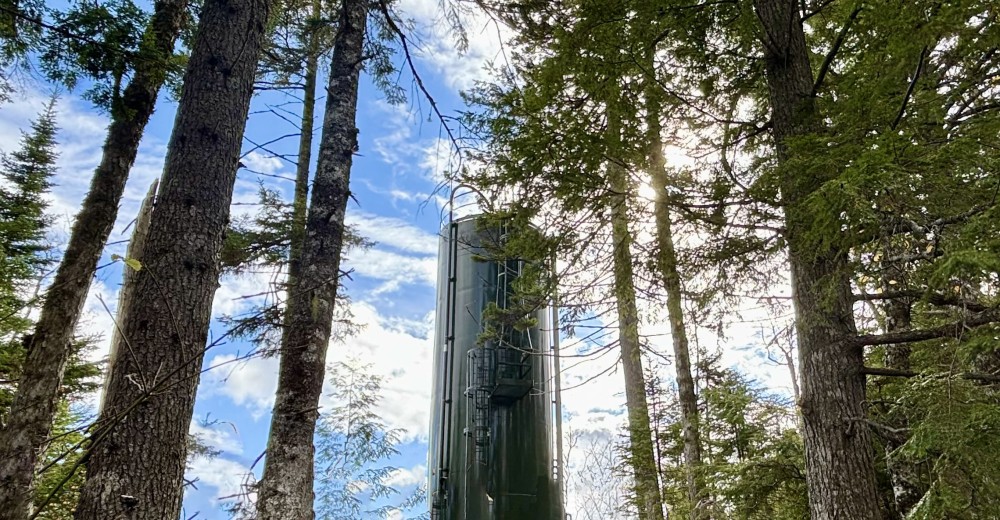In business, you know an industry is growing rapidly when the total sales chart features a vertical line.
This is the territory we find ourselves in with carbon removal. And if that's not a term Albertans are familiar with yet, the smart money is on that changing quickly. Alberta has a prime opportunity to attract global capital from companies that want to decarbonize.
In the last two years, total global carbon removal sales have risen from US$380 million to US$5.8 billion. Not bad for an industry that has attracted little public attention. But it should. And especially in Alberta, where it’s a natural fit.
Carbon dioxide removal, commonly called CDR, is a suite of methods that literally pull carbon dioxide out of the air to reduce the damage being caused by climate change.
This emerging industry could create 95,000 to 130,000 jobs per year, jobs that look a lot like oil and gas sector jobs, if we removed the equivalent of just 15 per cent of Canada’s annual emissions, according to a recent Rhodium Group report.
Alberta should be attractive to this industry. A critical factor in a successful CDR operation is secure, long-term storage of the carbon dioxide that's pulled out of the atmosphere. The provincial government says Alberta has one of the best and abundant geological formations to safely store emissions. And it got ahead of the game a decade ago, when it established its legislative and regulatory frameworks around developing carbon capture, utilization and storage (CCUS). This close cousin of CDR involves capturing carbon dioxide at large industrial facilities, such as petrochemical facilities, fertilizer plants and coal-power plants. Similar to CCUS, several popular types of CDR store the carbon dioxide in deep underground rock formations.
Alberta’s work on CCUS means the province comes ready made with a skilled workforce that knows how to handle carbon dioxide storage. The provincial government sees this as a way to diversify the energy sector.
At the Pembina Institute, we agree. And we know that the jobs and revenues from these projects can benefit local communities, too.
On April 30, our CDR Centre is hosting a near sold-out event in Calgary, called Carbon Catalyst. The mayor of Innisfail will be there to share how the town embraced the economic opportunity and welcomed a Canadian CDR industry leader, Deep Sky, to their community. Deep Sky is completing work on a carbon removal innovation and commercialization centre there. The locals are already benefiting. Take the story of Thomas Morton, who used his 40 years of experience in the oil and gas industry to become the centre’s first facility operator.
With U.S. President Donald Trump continually roiling the market with tariffs, there's pressure to diversify and strengthen our economy. Trump also froze funding for CDR projects in the U.S, so suddenly there’s an opportunity to attract that industry to our country instead.
To its credit, Alberta recently published a new version of their Carbon Dioxide Capture and Permanent Geologic Sequestration protocol, which now recognizes carbon dioxide captured from the atmosphere. This would allow industrial emitters in Alberta to purchase carbon removal credits to comply with emissions regulations.
But Ontario wrapped up a recent consultation on its proposed Geologic Carbon Storage Act, too. That province also recognizes that a benefit of enabling carbon storage is that it will attract investment and encourage innovation. B.C. and the federal government also launched consultations to integrate CDR within their carbon compliance systems and establish regulations for carbon storage.
There is plenty of movement and potential. With heavy hitters like Microsoft and Google clearly displaying an appetite for CDR, it would be wise to let them know Alberta is taking the industry seriously. CDR developers would gain the confidence they need to invest and grow their business in Canada if the provincial government maintains a stable and supportive policy environment. This includes continuous improvement of the Technology Innovation and Emissions Reduction (TIER) Regulation, which is the province's industrial carbon pricing and emissions trading system.
Alberta should capitalize on economic potential of carbon removal
Emerging industry could create 95,000 to 130,000 jobs per year
April 25, 2025
Op-ed
Published in Calgary Herald (April 25, 2025)

Photo: CarbonRun
Related Research & Analysis

Oil & Gas
November 11, 2024
Op-ed
Every year at COP, Canada shows progress on cutting methane
What about this year?

Oil & Gas, Electricity, Transportation, Buildings, Equitable Transition
July 9, 2024
Op-ed
Environmental checkup: reviewing governments’ clean-economy performance
As Canada’s environment ministers prepare to meet, we examined how their governments are performing on climate, energy, and preparedness for the clean economy.
Programs
Leading the transition to clean energy requires advancing solutions to today’s energy challenges from various angles.
The Pembina Institute has spent four decades working to reduce the environmental impacts of Canada’s energy production and to provide actionable ideas on how to implement clean energy.


